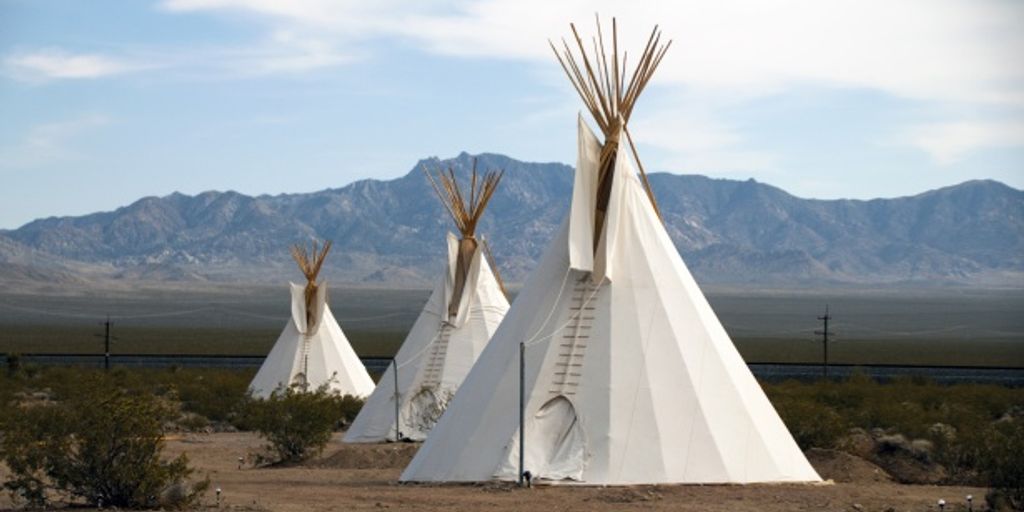Exploring the History and Cultural Significance of Famous Yurts
Yurts have captured the world’s imagination as emblems of a traditional lifestyle and masterpieces of craftsmanship and adaptability. Each yurt’s components are carefully constructed and assembled, revealing much about the values and skills of a society that honours flexibility and sustainability. Beyond their functional aspects, gers are brimming with cultural significance, serving as a living testimony to Mongolia’s rich past and present way of life.
Key Takeaways
- Yurts have a rich history dating back to the Bronze Age and have evolved significantly over the centuries.
- These structures hold deep cultural significance in Mongolia, symbolising national identity and heritage.
- Yurts have gained international interest, being adopted for various uses in Europe, North America, and beyond.
- Traditional yurt construction involves unique materials and techniques that highlight sustainability and adaptability.
- Modern adaptations of yurts are becoming popular in eco-friendly living, contemporary architecture, and even popular culture.
Historical Origins of Mongolian Yurts

Let’s dive into the fascinating history of Mongolian yurts, tracing their journey from ancient times to the present day. These iconic structures have evolved significantly over the centuries, yet they remain a symbol of resilience and cultural heritage.
From Bronze Age to Mongol Empire
The origins of Mongolian yurts can be traced back to the nomadic cultures of the Bronze Age. These early yurts were circular structures framed with wooden poles and covered by animal skins or felt. Their design was inherently practical, catering to the needs of nomadic lifestyles across Central Asia by providing portable and sturdy shelters.
Evolution Through Centuries
As time progressed, the yurt’s design evolved to meet the changing needs of its inhabitants. During the rise and reign of the Mongol Empire, yurts became more sophisticated, incorporating intricate woodwork and felt coverings. This period marked a significant evolution in yurt construction, reflecting the growing complexity of Mongolian society.
Influence on Modern Yurt Designs
Today, the influence of traditional Mongolian yurts can be seen in modern yurt designs around the world. While materials and construction techniques have advanced, the core principles of portability, durability, and cultural significance remain unchanged. Modern yurts continue to honour their ancient roots while adapting to contemporary needs.
The Mongolian ger is believed to originate from the Eurasian steppe, specifically the regions that are now part of modern-day Kazakhstan. This enduring structure is a testament to the ingenuity and adaptability of nomadic cultures.
Cultural Significance of Yurts in Mongolia
Yurts, or ‘gers’, are more than just shelters; they are enduring symbols of Mongolian national identity and a living testament to the nomadic traditions central to our cultural heritage. These structures have captured the world’s imagination as emblems of a traditional lifestyle and masterpieces of craftsmanship and adaptability. Each yurt’s components are carefully constructed and assembled, revealing much about the values and skills of a society that honours flexibility and sustainability. Beyond their functional aspects, gers are brimming with cultural significance, serving as a living testimony to Mongolia’s rich past and present way of life.
Famous Yurts Around the World
Yurts have truly gone global, capturing the imagination of people far beyond their Central Asian origins. From Europe to North America, these unique structures have found new purposes and admirers. Whether it’s for eco-friendly living or as part of the top 10 world’s most luxurious glamping retreats, yurts are making their mark.
Yurts in Europe
In Europe, yurts have become a popular choice for those seeking unique and sustainable living options. Many eco-resorts and glamping sites now feature yurts, offering a blend of comfort and a connection to nature. The circular shape and lattice framework of yurts not only provide structural integrity but also add a touch of exotic charm.
North American Yurt Communities
Across the pond in North America, yurt communities are thriving. These communities often focus on off-grid living and sustainability. Yurts are featured in several TV shows, showcasing their versatility and appeal. Whether it’s a remote mountain retreat or a coastal hideaway, yurts offer a unique living experience.
Yurts in Ecotourism
Yurts have also found a significant place in the world of ecotourism. Many travellers are looking for ways to enjoy nature without compromising on comfort. Yurts provide the perfect solution, combining the thrill of camping with the luxury of modern amenities. This has made them a popular choice in eco-friendly resorts around the world.
The global fascination with yurts is a testament to their timeless design and cultural significance. They are not just shelters but symbols of a lifestyle that values flexibility, sustainability, and a deep connection to nature.
Construction and Design of Traditional Yurts
Materials and Techniques
When it comes to building a traditional yurt, the authentic design and craftsmanship of the Kazakh and Kyrgyz people are truly remarkable. Recognised by UNESCO, these skills have been preserved and passed down through generations. The materials used, such as wood for the frame and felt for insulation, are chosen for their durability and ability to withstand diverse climatic conditions. The circular shape of the yurt not only provides stability against strong winds but also promotes even distribution of heat in winter and cool air in summer.
Architectural Features
The structure of a traditional yurt is both simple and sophisticated. It consists of a wooden frame, often made from willow or birch, and a felt covering. The frame includes a lattice wall, roof poles, and a central crown. This design allows for quick assembly and disassembly, making it ideal for nomadic lifestyles. The circular design is not just aesthetically pleasing but also energy efficient, reducing the need for excessive heating or air conditioning.
Sustainability and Adaptability
Yurts are incredibly eco-friendly options. They require fewer materials compared to other traditional structures like tipis, making them a more sustainable choice. The use of natural materials like wood and felt ensures that yurts have a minimal environmental impact. Additionally, their adaptability to various climates and terrains makes them a versatile option for eco-conscious living.
The traditional yurt is a testament to the ingenuity and resilience of nomadic cultures, offering a perfect blend of functionality and sustainability.
Modern Adaptations of Yurts
Yurts have come a long way from their traditional roots, evolving into versatile structures that cater to modern needs. Modern adaptations can include insulation upgrades, additional windows, house wrap (for humid areas), and solar panels, making gers suitable for year-round living. Let’s dive into some of the fascinating ways yurts have been adapted in contemporary times.
Yurts in Contemporary Architecture
In today’s architectural landscape, yurts are being reimagined with a blend of traditional design and modern innovation. These structures are not just for nomadic lifestyles anymore; they are being used as permanent homes, studios, and even classrooms. The circular shape and lattice framework of yurts provide a unique aesthetic that stands out in any setting.
Eco-Friendly Living Solutions
One of the most exciting aspects of modern yurts is their potential for eco-friendly living. With the growing emphasis on sustainability, yurts offer a low-impact housing solution. They can be equipped with solar panels, composting toilets, and rainwater harvesting systems, making them an excellent choice for those looking to live off-grid.
Yurts in Popular Culture
Yurts have also made their way into popular culture, appearing in TV shows and movies as symbols of alternative living. They are often featured in shows about sustainable living and off-grid lifestyles, highlighting their versatility and charm. Whether used as a unique holiday accommodation or a stylish backyard retreat, yurts continue to capture the imagination of people around the world.
Yurts in Global Context
International Interest and Adoption
Yurts have transcended their Central Asian origins to pique the curiosity of diverse communities worldwide. In locations as far removed as Europe and North America, yurt tent construction has been embraced for various purposes, ranging from ecologically friendly living to alternative holiday accommodations. The yurt tent’s circular shape and lattice framework provide structural integrity and are imbued with cultural stories of a nomadic heritage.
Cultural Exchange and Influence
The traditional Mongolian ger, known as the yurt, has captured global interest due to its unique design and cultural significance. This has led to increased visibility and adoption beyond Mongolia’s borders. Yurts are popular in North America and Europe, especially in “backcountry” or camp settings. Some consumers choose to use native hardwoods, such as ash or chestnut, for their yurts. More consumers use high-tech material, such as aircraft cables, for a more secure construction. Unlike traditional yurts, these modern yurts are usually meant to be relatively permanent.
Future of Yurt Living
Yurts have captured the world’s imagination as emblems of a traditional lifestyle and masterpieces of craftsmanship and adaptability. Each yurt’s components are carefully constructed and assembled, revealing much about the values and skills of a society that honours flexibility and sustainability. Beyond their functional aspects, gers are brimming with cultural significance, serving as a living testimony to Mongolia’s rich past and present way of life.
In a world increasingly seeking sustainable and adaptable living solutions, the ancient yurt tent emerges as a fascinating blend of history, practicality, and modern relevance. From the vast steppes of Central Asia to the modern landscapes of North America, the yurt has evolved while retaining its core design principles.
Yurts have a rich history and cultural significance across the globe, from the steppes of Central Asia to modern glamping sites. Discover more about these fascinating structures and how you can experience the magic of staying in one.
Conclusion
Yurts have captured the world’s imagination as emblems of a traditional lifestyle and masterpieces of craftsmanship and adaptability. Each yurt’s components are carefully constructed and assembled, revealing much about the values and skills of a society that honours flexibility and sustainability. Beyond their functional aspects, gers are brimming with cultural significance, serving as a living testimony to Mongolia’s rich past and present way of life. As we continue to seek sustainable and adaptable living solutions, the ancient yurt tent stands as a fascinating blend of history, practicality, and modern relevance. From the vast steppes of Central Asia to the modern landscapes of North America, the yurt has evolved while retaining its core design principles, making it a symbol of enduring heritage and innovative living.
Frequently Asked Questions
What is a yurt?
A yurt, also known as a ger in Mongolian, is a portable, dome-shaped tent traditionally used by nomadic cultures in Central Asia. It is constructed with wooden trellis walls and covered with skins or felt.
How old are yurts?
Yurts have a history that spans thousands of years, with the earliest mentions dating back to around 600 BCE. They have been a distinctive part of nomadic living in Central Asia for at least three thousand years.
What materials are used to construct a traditional yurt?
Traditional yurts are built using wooden trellis walls, which are covered with skins or felt. These materials provide insulation and durability, making yurts suitable for various climates.
Why are yurts culturally significant in Mongolia?
Yurts, or gers, are more than mere shelters in Mongolia; they are enduring emblems of national identity and a living testament to the nomadic traditions central to Mongolian cultural heritage.
How have yurts been adapted in modern times?
In modern times, yurts have been adapted for various purposes, including eco-friendly living and alternative holiday accommodations. Their design principles have been retained while incorporating modern materials and technologies.
What role do yurts play in sustainable living?
Yurts are considered a sustainable living solution due to their use of natural materials and energy-efficient design. They exemplify adaptability and minimal environmental impact, making them popular in eco-friendly communities.





